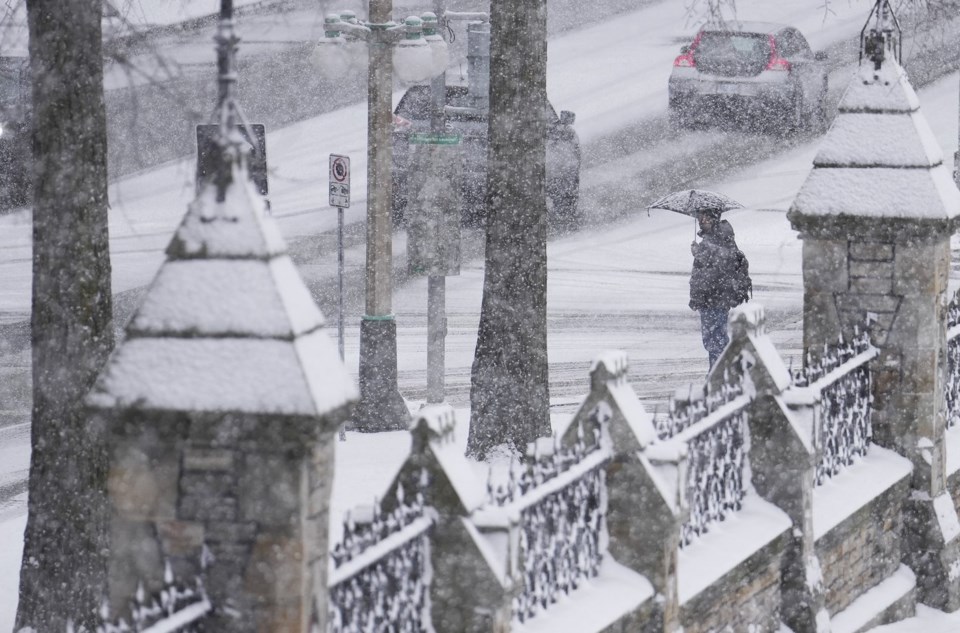OTTAWA — The national capital was blanketed under the first snowfall of the season on Wednesday, giving a snow globe effect to Parliament Hill as officials from Environment Canada presented a seasonal forecast for a winter that will feel more like a typical 91原创 winter, despite above-normal temperatures.
The El Niño weather pattern that brought record-breaking warm temperatures last year and forced the closure of the iconic Rideau Canal rink for all but a handful of bumpy skating days has shifted, and the cooler and more unsettled La Niña is taking its place.
"It will feel like more of a typical winter for many people," said meteorologist Gina Ressler.
However, Environment Canada is predicting above-normal winter temperatures for northern Ontario and Quebec, Nunavut and Newfoundland and Labrador.
Sea ice is expected to develop very late in the Hudson Bay, and officials said there is a "near certainty" of above-normal temperatures in that region as a result.
Normal temperatures are an average of the last 30 years.
Officials wouldn't guess at whether the world's longest skating rink in Ottawa will be open this year, noting that their seasonal outlooks are not meant to predict detailed regional forecasts.
Temperatures could be above-average in the rest of the country, especially in December, but that is expected to change by the end of the meteorological winter at the end of February in the Prairies and B.C.
The models indicate there could be less snow than usual in December in Quebec and the Maritimes.
"The forecast is indicating a wetter-than-normal start to the season in December, both in the Western provinces and in the Northwest Territories and Yukon," said Environment Canada research scientist Bill Merryfield.
La Niña winters typically bring more precipitation to the West Coast and the Rockies, he added, which could be positive news for regions that have struggled with extremely dry conditions and wildfires in recent years. They also tend to bring stormy conditions in the Atlantic and around the Great Lakes — both of which have seen significant snow events already this year.
Environment Canada says climate change is causing Canada's temperatures to rise at a rate that's about twice the global rate of warming, and the effect is even more pronounced in the Arctic.
That is leading to extremely warm sea surface temperatures in the Atlantic, officials said, while it's dampening the effect of cooling patterns like La Niña on the 91原创 coast.
Environment Canada is launching a pilot project in 2025 to indicate whether human-caused climate change had an impact on the likelihood of severe weather events.
The model will take current climate simulations and compare them to simulations with greenhouse-gas levels that are in line with the pre-industrial era, officials said.
"It looks at how much the chance of this particular event that's being looked at is either elevated or reduced by the human influences," said Merryfield.
Environment Canada will rank the influence of human-caused climate change on a particular weather event, eventually incorporating extreme precipitation events as well.
This report by The 91原创 Press was first published Dec. 4, 2024.
Sarah Ritchie, The 91原创 Press



